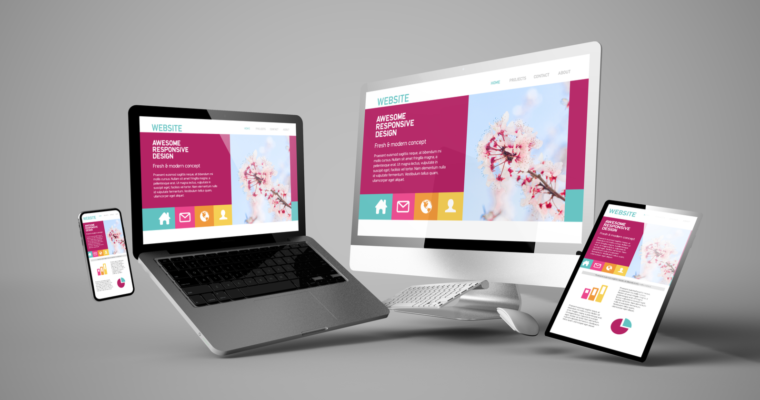
An terms and condition screen is displayed when a new user signs in to your app. This screen gives information about the services that you offer and asks for permissions before the user can continue. It should outline the rules for content use and the rules for suspending or removing users. It is a good idea to seek legal assistance if you don't know how to put this screen together.
Log in screen
A well-designed sign-in screen will improve user experience and help increase app retention. It is important to consider a few points before you design the login screen. It should be efficient, fast, and secure. It should also be visually appealing to prevent users from getting confused.

The login screen of an app should have links and be responsive to multiple screen sizes. The password of the user should be easily copied from other applications and clearly displayed. The login process must be secure. URL Manipulation, which allows you to change cookies, may be an option.
Profile page
The Profile page of an application screen is an important part the user experience. This page can be used to track friends' activities and view their photos. It uses a card-style layout to make information easily visible and not clutter the screen. It allows the user to view their most recent routes and edit their profile. The app's bright font and low contrast could cause vision impairments.
Depending on the type and purpose of your application, the header may display information about the user and settings. It could contain the user's email address and name. But it can also include credit or points. A profile screen is a good place for you to set action buttons.
Search screen
iOS 16 introduces the Search screen to your home screen. Instead of using the traditional search button, iOS 16 now displays a series of dots which indicate the pages that you have visited. But pressing the dots does not do anything. You can disable this new feature in Settings > Home Screen. This article was originally published on Sept. 13, 2022 at 11:57 a.m. PT.

Open the settings menu and turn off the "Show On Home Screen" switch. This will bring up the search bar at top of the screen.
FAQ
Can I use a Template or Framework on My Website?
Yes! When creating websites, many people use pre-built templates. These templates provide all the code necessary to display information on your site.
These templates are the most in-demand:
WordPress - One of the most used CMSes
Joomla - Joomla is another popular open-source CMS
Drupal - Drupal is an enterprise-level software that large organizations can use
Expression Engine - Yahoo's proprietary CMS
Hundreds of templates are available for each platform, so finding the right one should be easy.
What is Website Design Software and How Does It Work?
Website design software is used by graphic artists, photographers, illustrators, writers, and others involved in visual media to create webpages and other digital materials.
There are two main types: cloud-based or desktop software. Desktop apps are installed locally on your computer and require you to install additional software on your computer. Cloud-based solutions are hosted remotely on the internet and require no additional software on your computer, making them ideal for mobile users.
Desktop Applications
Although desktop apps offer more features than cloud-based applications, they are not always required. Because it's more convenient, some people prefer to use a desktop app. Others like to use the same tool regardless of whether they are working on a laptop or a smartphone.
Cloud-Based Solutions
Cloud-based solutions are a great option for web designers looking to save time and money. These services allow you to edit any type of document from anywhere that has an internet connection. This means you can use your tablet to do some work while you wait for your cup of coffee to brew.
A license is required if you opt for a cloud-based service. You don't have to buy additional licenses for upgrading to the latest version.
These programs can be used to create web pages, if you have Photoshop, InDesign or Illustrator.
Is it more likely to be hired as a web developer if I have a good portfolio?
Yes. It is important to have a portfolio when applying for web design or development jobs. Your portfolio should include examples of your skills.
A portfolio typically includes samples from your past projects. These examples can showcase your abilities. Your portfolio should include everything from mockups, wireframes, logos, brochures, websites, and even apps.
What is responsive web design?
Responsive Web Design, also known as RWD, is a way of designing websites so that content displays on all devices. This includes desktop computers, tablets (tablets), smartphones, etc. This allows users to view a website on one device simultaneously but still access other features such as navigation menus, buttons, etc. RWD aims to ensure that every user who views a site is able to view it on any screen size.
If you are building a website to sell products primarily via eCommerce, then you want to make sure that customers can purchase items from your store even if they view it on their smartphones.
A responsive website will adapt its layout to suit the device it is being viewed on. A website that is viewed on your laptop will display the same way as a desktop website. It will be different if the page is viewed from your phone.
This allows you create a website that looks great on any device.
How do you design a website?
Your customers will first need to understand the purpose of your website. What do they look for on your site?
What problem might they face if your site doesn't have what they are looking for?
Now you need to figure out how you can solve these problems. Also, you need to ensure that your website looks professional. It should be easy-to-use and navigate.
Your site should be extremely well designed. It shouldn't take too much time for it to load. If it takes too long, people may not be able to stay as long. They will move on to something else.
If you're going to build an eCommerce site, you need to think about where all your products are located. Are they all in one location? Are they spread around your site?
You need to decide whether you want to sell one product at once or many different types of products. Are you looking to sell one product or several?
Once you have answered these questions, you can begin building your site.
Now, it's time to take care of the technical aspects. How will your site work? Will it be fast enough? Can people get to it quickly from their computers?
Will they be able buy anything without having pay an extra fee? Do they need to register in order to buy anything?
These are essential questions that you need to ask yourself. These questions will help you to make the right decisions and move forward.
Statistics
- Did you know videos can boost organic search traffic to your website by 157%? (wix.com)
- When choosing your website color scheme, a general rule is to limit yourself to three shades: one primary color (60% of the mix), one secondary color (30%), and one accent color (10%). (wix.com)
- It's estimated that in 2022, over 2.14 billion people will purchase goods and services online. (wix.com)
- At this point, it's important to note that just because a web trend is current, it doesn't mean it's necessarily right for you.48% of people cite design as the most important factor of a website, (websitebuilderexpert.com)
- In fact, according to Color Matters, a signature color can boost brand recognition by 80%. There's a lot of psychology behind people's perception of color, so it's important to understand how it's used with your industry. (websitebuilderexpert.com)
External Links
How To
How can I start as a UI Designer
Two ways to be a UI designer are available:
-
You can get a degree from school in UI Design.
-
You can go freelance.
If you want to go through school, you'll need to attend college or university and complete four years of study. This covers art, business, psychology, and computer science.
Classes can be taken at either state or community universities. Some schools offer free programs; others charge tuition fees.
You will need to find work after graduation. If you choose to work for yourself, you must build your client base. It is vital to build a network of professionals so they are aware that you exist.
There are many opportunities to intern for companies that specialize on developing web applications. Many companies employ interns to gain practical experience before hiring full time employees.
You will find more jobs if you have a portfolio that showcases your work. Your work samples and details about the projects should be included in your portfolio.
It's a good idea to send your portfolio to potential employers via email.
Market yourself as a freelancer. You can list your services on job boards such Assure, Guru, Freelance, Guru and Upwork.
Freelancers frequently receive assignments from recruiters who post jobs online. These recruiters look for qualified candidates to fill specific positions.
These recruiters will typically give the candidate a project brief that outlines the position's requirements.
While freelancers aren't required to sign contracts for a long time, they can still be paid. You should negotiate an upfront payment if your goal is to move forward.
Designers prefer working directly with clients over working through agencies. This may sound ideal but many people lack the skills.
Agency workers often have extensive industry knowledge. They have access the right training and resources to ensure they produce high-quality results.
Agency workers often receive higher hourly rates in addition to these benefits.
One downside to working through an agency is the inability to have direct contact at work with the employer.
A UI designer must be self-motivated, creative and flexible.
You must also possess excellent verbal and written communication skills.
UI designers are responsible to design websites using user interfaces (UI) as well as visual elements.
They are responsible for ensuring the site meets its users' needs.
This involves understanding the information users need and how to make your site work.
Wireframes are created by UI designers using a variety of tools. Wireframing helps them visualize the layout of a page before beginning their designs.
You can find wireframe templates online. This makes it easy to make your own wireframes.
Some designers focus solely on UI design, while others combine UI design with graphic design.
Photoshop is used by graphic designers to edit images.
Adobe InDesign is then used to layout pages and layouts.
Photographers capture images using digital cameras or DSLRs.
The photos are then uploaded into a photo editing program. Here they can add captions, filters, or other effects.
After taking the photo, the photographer saves it in a file format that is compatible with the website.
It is crucial to consider all aspects when designing a website.
This includes research, planning, wireframing, prototyping, testing, coding, content creation, and publishing.
Research - Before you start a new project, it's important to do thorough research.
Planning - After you have completed your research, it's time to start creating a plan.
Wireframing – A wireframe is a preliminary sketch or drawing of a webpage or application.
Prototyping - Prototypes help ensure that the final product matches the initial vision.
Testing - Multiple rounds of testing should be done on the prototype to make sure it works properly.
Coding – Coding is the art of writing computer codes.
Content Creation - Content creation covers everything from writing copy to managing social media accounts.
Publishing is the act of uploading files and making sure that the site can be accessed.
As a freelance UX/UI designer, you will need to learn about different projects.
Some companies require only wire frames, others require complete prototypes.
Depending upon the type and scope of the project, you may be asked for specific tasks.
One example is that if you are hired as a wireframe designer, you might be required to create many wireframes.
If you're being hired to create a full prototype, you might be asked to create a fully functional site.
It doesn't really matter what project you're working on, good interpersonal skills are vital.
Referrals are the most common way that clients hire freelancers. You must establish solid relationships with potential employers.
Additionally, communication skills are essential.
Portfolios are an essential part of any freelancer’s toolbox.
It displays your work and shows your ability to produce high-quality results.
You can do it online with a professional portfolio.
Finding websites similar to yours is the best way to start.
Then, search these sites to see how each one presents its services.
Once you have identified the best practices you believe are most effective, you can start to implement them.
It's also useful to include links from your portfolio in your resume.